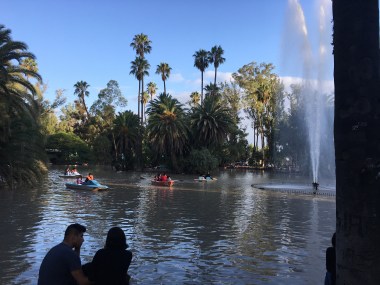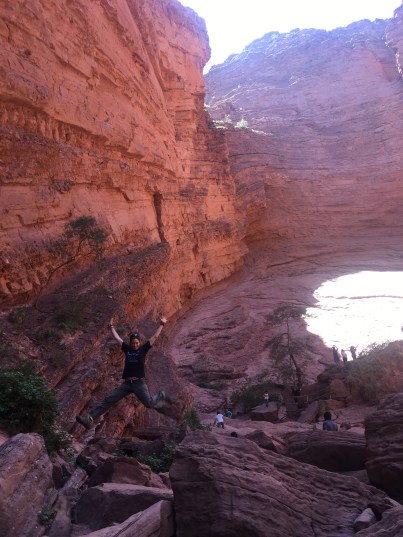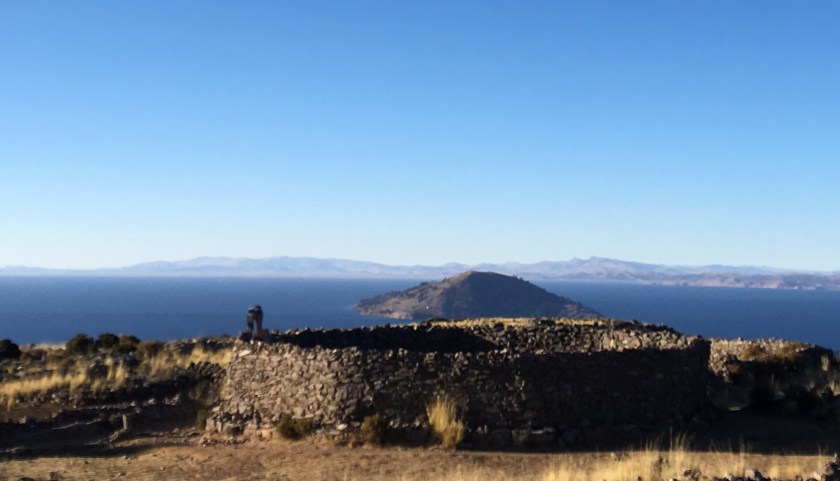On October 14, 2023 I began the 5-hour descent from the Peruvian high jungle of Villa Rica (a small town known for coffee production and coffee tourism) to the low jungle town of Iscosazín to begin work on our Engineers Without Borders (EWB) water project with the indigenous community of Shiringamazú.

It was a beautiful drive, especially because the road had been serviced earlier in the year. My past three trips to the community (since 2018), I had always arrived feeling like a maraca after a Cuban music festival. This trip was much smoother!
…Except that the car broke down about 40 minutes before arriving. In the dark. In the middle of the jungle. Where there wasn’t cell phone service. After about 15 minutes, a truck passed by and was kind enough to give us a ride and even tow the car the rest of the way in!

And so I arrived, cognizant of the foreshadowing of all the twists and turns that would probably lie ahead, (not uncommon in any engineering and construction project – especially an international one – and especially in a rural area, deep in the jungle).
I barely had time to thank my lucky stars that I had made it safely, and the next morning I was meeting with our NGO partner and our contractor to review our plans… then driving an hour to conduct a site inspection/assessment… and then detouring to a recently installed well system about 40 minutes away (Chuchurrus) – all while getting caught in the first rainstorm of rainy season!

The site inspection had brought another surprise, making me grateful we packed it in before we met with the community. After hacking our way through the jungle to the spring site, we realized that our plan to capture spring water from this site would not be feasible. Our team had hoped to be able to do a spring capture here after having reviewed more than 10 different possible approaches to bring water to the community. This meant that we would now need to pivot to focusing on the other part of our design and another one of our options: a hand-dug well.
We heard loud claps of thunder as we hiked over to inspect the site we planned for the well and to consider how we would pivot. There was a nearby stream, and we could potentially capture this surface water. However, the treatment system would require maintenance that would be challenging for an already under-resourced community. Rain drops began to fall, and as we were hiking back to the car, the sky opened up and poured on us, as if teasing us about the conundrum of this site: plentiful rainwater during the rainy season but no source of water sufficient to supply the community through the dry season.

If you’ve been on an EWB trip, you know that the days are packed full – both physically and intellectually challenging, as we travel to an environment we aren’t used to, where we design and implement a technically challenging project – all in the context of a culture and language that we don’t typically work in. And this trip was already checking all of those boxes!
The next day was one of the most important days of any EWB trip – we met with the community leaders. These meetings are especially important because of the nature of EWB work: there is no cell service or internet in the community, so these meetings are our primary communication with the community. That’s right – for most of the year, while we are in the US raising funds and doing technical work for the project, the community doesn’t see us and probably thinks we forgot about them, like they say many NGOs have done in the past.
In this meeting, there was a mix of new leaders and those from the previous year, so it was important to explain who we are and what we were doing. As the meeting went on, some people from the community began to gather around and listen in. With the help of our NGO partner, we explained that we were volunteers, working on this project outside of our normal work and family commitments and that we even have to raise the funds on our own to pay for the project.
That incited multiple leaders (and even some community members) to give moving speeches about the importance of water, especially for the children in the community. They offered to help in any way they could and urged the leaders and other community members to do all they could to help make the water project a success. The community leader pledged to feed and house the workers for free and provide and transport aggregate material to the site for the duration of the project.
Two community members that live in the neighboring sector were so moved that they congratulated us for the work we were doing and offered to help us during the whole week, even though they would not directly benefit from the water system since they live in the neighboring sector. For the rest of the week, they became my core surveying team.

After returning to town to use internet to consult the EWB team through photos, videos, and whatsapp conversations, we decided to move forward with the hand-dug well and determine if the well could provide enough water to meet the community’s needs. If it didn’t, we could consider other options, such as using the well as a pumping chamber for treated surface water from the stream, digging a well near the river and pumping long distance, or finding a drilling rig that could tap a deep aquifer.
While the contractor led a team of workers to prepare the well site and begin digging, I began the land survey, first with a volunteer, Carlos, and later with Alex and Mario surveying along the road where the water mains will run.



Despite the extreme heat from the sun beating down on us all day long, our team maintained good spirits and made good progress. Mario stopped by tiendas (community stores) we passed and always showed up with a donated bottle of water to keep us hydrated. A few people even came out of their houses with drinks for us or invited us in to drink from coconuts.

Since the community had offered to provide food and housing for the workers, we ate breakfast, lunch, and dinner at the “comedor,” a communal restaurant that was an outdoor eating area with a small kitchen area where two women prepared food. Meals were light and consisted mostly of fish (sometimes chicken) – the main protein of the area – and rice.

From left to right: Alex, Benamin, Juan, Mario, Hugo, Daniel, Elmer, me.
During the week I was able to speak with a couple people about their life without tap water. Dry season is really hard for everyone because they have to go long distances to fetch water, and even then the water sources are contaminated. Carlos told me, “We really suffer for water in the dry season, especially this summer. The water we do have is from spring-fed ponds, but it is contaminated because the animals are there in the ponds when we go get our water – sometimes ducks, chickens – and this affects our health, the health of the whole community.”

I was quite sad to leave the community after we had all worked so hard together and enjoyed each others’ company. Our contractor remained in the community and hired two locals to help with the hand-digging of the well. After about a month and a half, the team encountered an impassable layer of rock, and we had to bring this phase of the digging to a pause. While we wait for the rainy season to pass, we are working hard to raise funds and looking for a company in Peru with a drilling rig that can help us complete well construction after the rainy season in 2024.



Please donate if you can, and please let us know if your company or a business you know would be interested in supporting the community of Shiringamazu! For more information and history about the project, see our EWB Peru Project webpage.













 As you climb, every now and then you are rewarded with indescribable views of the lakes below.
As you climb, every now and then you are rewarded with indescribable views of the lakes below.




































































































